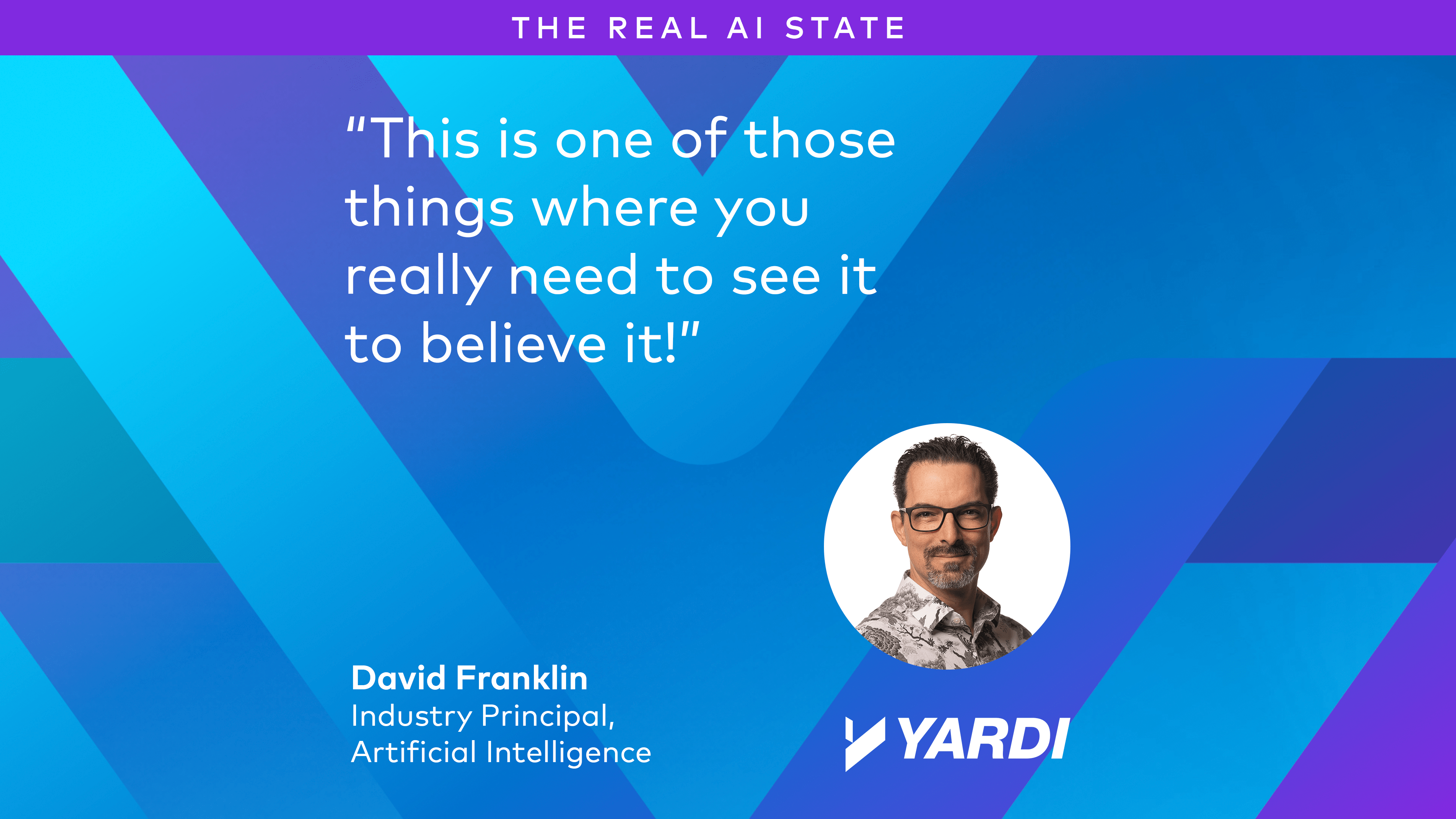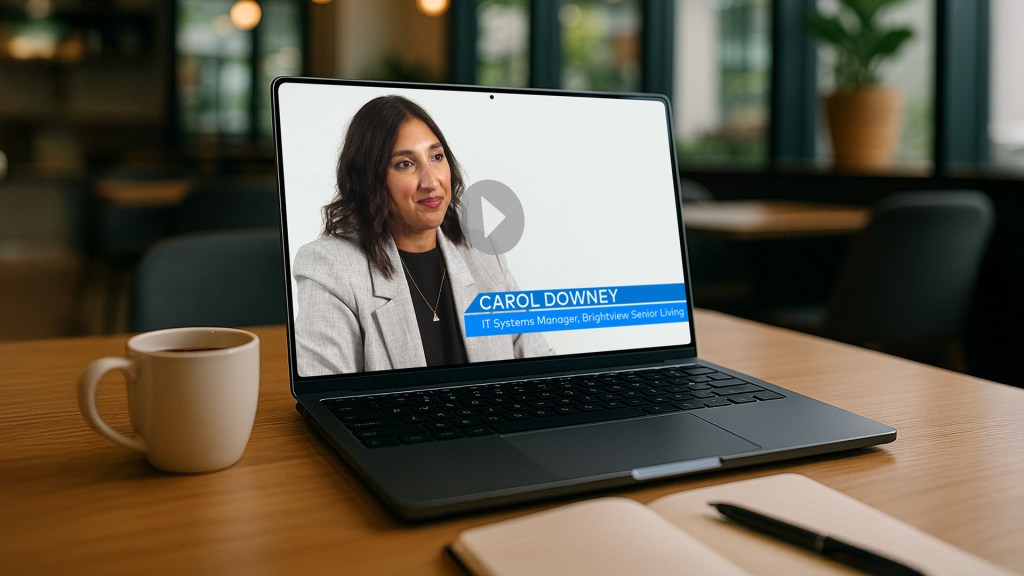By David Franklin on May 9, 2025 in Technology

Welcome to the first post of The Real AI State, written by me, David Franklin, your friendly neighborhood Answer Man. The goal of this blog is to provide an update on some of the critical developments in the world of AI during the past week or so and to explain their relevance to real estate. I spend a significant amount of time researching, reading and watching content related to AI and its impact on the world of business, and it would be silly for me to keep all this learning to myself.
Let’s dig in!
OpenAI
What happened
OpenAI launched an updated version of their ChatGPT-4o model that had an unfortunate side effect: It was excessively sycophantic. While it’s nice to have a model that is agreeable and easy to talk to, it’s important that it remains balanced. In their words: “It aimed to please the user, not just as flattery, but also as validating doubts, fueling anger, urging impulsive actions or reinforcing negative emotions in ways that were not intended. Beyond just being uncomfortable or unsettling, this kind of behavior can raise safety concerns — including around issues like mental health, emotional over-reliance, or risky behavior.”
The result is that they rolled back the update and modified their testing methodologies to try and prevent this type of issue in the future. If you’re interested in learning more about how they create, evaluate and release new models, take a look at this article.
Why it matters
For companies that want to utilize tools like ChatGPT in their businesses, it’s critical that the behavior of those tools is consistent with best practices. Yardi has chosen to use OpenAI as the provider of choice for our LLM integrations. It’s nice to know that we’re partnering with an organization that has a deep understanding of the pitfalls of AI and how to mitigate them.
Anthropic
What happened
Claude.ai, Anthropic’s flagship LLM, will now support tool use via MCP. OK, let me break it down for you. MCP stands for Model Context Protocol, and it is simply a mechanism for an AI software to interact with other systems. In English, it’s a way to let an AI like Claude interact with other software like Gmail to read emails and summarize them, for example. Because MCP is an open standard, any tool that supports MCP can be used by AIs to do useful things. MCP is the hot new trend that everyone is talking about, and it is supported by all the major players now including Anthropic, OpenAI, Meta, Microsoft, Google, etc. Other, non-AI companies are beginning to support MCP as well, to expose their capabilities to the AIs.
Why it matters
MCP is a new protocol and is fighting to become the de facto standard for integrating AI tools with third-party software. If MCP succeeds (and it seems to be doing so) perhaps Yardi will one day act as an MCP server, allowing for tight integration with other AI tools that our clients are using.
Open source
What happened
Several new open-source models have been released in just the last week. Did you know that the proprietary AI models from companies like OpenAI are not the only game in town? There are several big companies that are producing world-class LLMs that are available essentially free of charge, as well as some smaller companies that are still making amazing tools. Some of the leaders include Meta’s Llama, Microsoft’s Phi, Alibaba’s Qwen, Google’s Gemma, xAI’s Grok, Deepseek, Mistral, Falcon, etc. You would think that the huge, well-funded, private companies and their proprietary (closed) models would easily dominate the market, but open-source models have been doing exceptionally well.
Why it matters
While using OpenAI’s API is a relatively quick and easy way to incorporate LLMs into software, there are significant challenges that need to be addressed when relying on a third party. If OpenAI goes down for a period of time, features that are reliant on ChatGPT will become unavailable during the outage. There are also significant costs associated with using the API. One day, Yardi may choose to build our own model, based on an open-source model, and host it in our cloud rather than using OpenAI. We then become the masters of our own fate and can even improve the models with our own fine tuning to make them better for our needs. Exciting possibilities!
HeyGen
What happened
HeyGen released version IV of their AI avatar generator. It is amazing! The concept is that you provide the system with a reference video, and it uses a special type of neural network, similar to a Large Language Model, but trained on video instead of text, to create a new video but with lip movements synced to a synthesized version of your voice and a script that you provide. This is one of those things where you really need to see it to believe it!
Here’s a video of me talking about Virtuoso. Here’s the same video with me speaking French. Boy, am I glad that I skipped all those foreign language classes in high school.
Why it matters
We now have the ability to create high-quality synthetic videos with nothing more than a link to a URL. The video above was created by pointing to Yardi Virtuoso and letting the system auto-generate the scripts and video. Am I out of a job now? Perhaps not. While this is truly amazing stuff, it still lacks the creative spark that makes me, well, me. However, tools like this may be a great way to produce informational content in the future. Let’s see where it goes!
Thank you all for tuning in. Please subscribe to be notified whenever a new post comes out, and we look forward to seeing you on the next one.
Stay curious, my friends!
-David
Author bio
David is the industry principal of AI at Yardi, where he works closely with the sales team to help clients understand how Yardi’s solutions align with their business needs. A real estate technology, AI and IT guru with deep sales expertise and entrepreneurial roots, David brings decades of experience bridging the gap between technical innovation and real-world application. David’s superpower is making complex technical concepts approachable, interesting and easy to understand — especially for non-technical audiences. When he’s not working, you can find him skiing, rock climbing or racing his Tesla.
Disclaimer
This article is for general information purposes only. The opinions, analysis and commentary expressed are not and cannot be relied on as legal advice, and do not necessarily reflect the views of Yardi Systems, Inc., or any of its affiliates.


